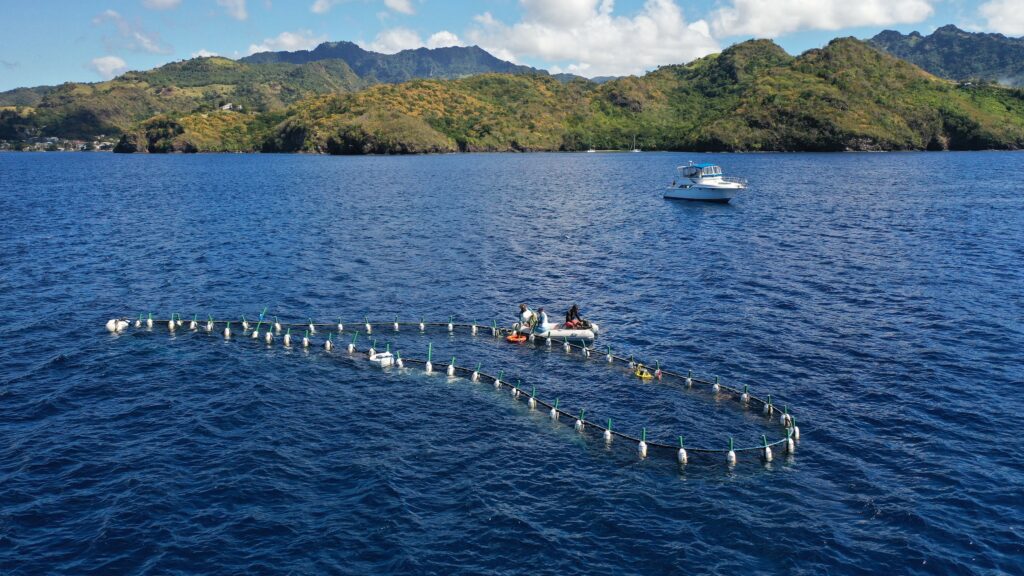SEIS (Seed Enterprise Investment Scheme) was launched by Chancellor George Osborne in 2012 as a way for small, early-stage companies to raise money through individual investors.
For startups, SEIS helps you raise money you need to grow when your startup is at an early stage by offering significant tax breaks to company investors, making a potential investment into your business more attractive.
Startups can now raise up to £250,000 through the SEIS scheme.
Liam Hallam, a SEIS expert with digital equity management company Vestd, says: “Hopefully the new £250,000 ceiling increases investment in seed companies. That’s the goal of SEIS. On top of that, the investor can now match the £250,000 with a further £200,000 of their own – doubled from £100,000. If you find an investor with deep pockets, they can back you more than they could have done previously.”
Just over 2,000 companies raised £175m through SEIS in 2020-21 with 64 per cent of businesses raising more than £50,000 and 39 per cent receiving investments of over £100,000.
Companies in the information and communication sector accounted for 41 per cent of all SEIS investment in 2020-21, while businesses registered in London and the Southeast accounted for the largest proportion of investment, raising £120m (68 per cent of SEIS investment).
To date, the SEIS has raised over £1.5bn worth of investment, with nearly 16,000 companies raising money through the scheme to date.
What is SEIS tax relief?
From April 6, 2023, an individual investor can invest up to £250,000 per tax year. This will allow the investors to claim up to a maximum of £125,000 income tax relief on qualifying SEIS investments made in one tax year. At 50 per cent, SEIS is one of the world’s most generous tax reliefs.
The investor will also benefit from a capital gains tax exemption on any profits that arise from the sale of shares after three years.
SEIS tax reliefs in full
- 50 per cent income tax relief
- Any profits from the sale of SEIS shares after three years is exempt from capital gains tax
- Inheritance tax does not apply to SEIS shares held for at least two years
- If SEIS shares are sold at a loss, investors can offset that loss against their capital gains tax
How to claim SEIS tax relief as an investor
You will need to follow these steps:
- Verify Eligibility: Ensure that you meet the eligibility criteria (see below) as an investor. For example, you must be a a UK taxpayer, invest in a qualifying SEIS company, and not be connected to the company in a significant way (e.g. as a director or employee).
- Obtain SEIS3 Certificate: The company in which you invest must provide you with an SEIS3 certificate within three years from the date of the investment. This certificate will confirm that the investment qualifies for SEIS tax relief.
- Complete Self-Assessment Tax Return: When filing you will need to include the details of the SEIS investment and the amount you want to claim for income tax relief.
- Claim Tax Relief: Calculate the amount of tax relief you are eligible for and enter it into the correct section of your tax return.
Pro tip: An SEIS investor who has more than 30 per cent of your company or has voting control cannot invest in a company through SEIS.
What kind of companies can use SEIS?
- Has up to 25 employees
- Less than three years old
- Less than £350,000 in value
- Incorporated in UK
- Never received investment from a venture capital trust or EIS (see below)
- Not listed on a stock exchange or have plans to list at the time SEIS shares are issued
- No control over another company that isn’t a qualifying subsidiary
- Not be (or have been) under the control of another company
In order to qualify for SEIS, your company must carry out a qualifying trade. Most companies do, but there are some exceptions.
What is a qualifying trade?
If over 20 per cent of your trade involves these areas, you do not qualify:
- Coal/steel production
- Farming/market gardening
- Leasing activities
- Legal/financial services
- Property development
- Running a hotel
- Running a nursing home
- Generation of energy, such as electricity and heat
- Production of gas or other fuel
- Exporting electricity
- Banking, insurance, debt or financing services
How can my investor make a profit?
Investors must hold shares for a minimum of three years if they want to use the 50 per cent write-off. If they sell before that, the 50 per cent tax break can be withdrawn.
Investors then exit in much the same way as any other investor, such as selling their shares to another investor or exiting as part of a follow-on fundraise. The company can also buy back the shares from an investor, just not through EIS.
What’s the difference between SEIS and EIS?
SEIS is targeted at raising investment in early-stage companies, while the Enterprise Investment Scheme (EIS) helps more established businesses raise funding.
You can raise up to £12m through EIS, rising to £20m if you are a “knowledge-intensive company” (KIC).
EIS investors can claim a 30 per cent tax break if they invest up to £1m each year (rising to £2m if it’s a KIC), compared to 50 per cent for SEIS.
The qualification criteria are also different, with EIS allowing investment for companies with up to 250 employees and up to £15m in assets.
To qualify for EIS, you must have been:
- Trading for less than two years
- Fewer than 250 employees
- Have less than £15m in gross assets
Can you claim both SEIS and EIS?
Yes, but only once you’ve exhausted your £250,000 SEIS allowance. If you want to raise more than the SEIS limit of £250,000, you can always start taking on EIS investment once you’ve hit the SEIS funding limit.
What can I spend SEIS investment on?
You can only spend the funds you raise through SEIS on either:
- Expenses that are going to help grow your company, such as hiring new employees or marketing your business.
- Research and development that is going to help you grow your company, such as developing a new product or researching ways to improve an existing one.
Also, you must spend the money you raise through SEIS within three years.
Applying for SEIS Advance Assurance
Founders can apply to HMRC for “Advance Assurance” so that prospective investors can be reassured they will qualify for tax relief.
Liam Hallam says there are several things you can do to help get that Advance Assurance:
- Be familiar with SEIS guidelines, including eligibility criteria
- Have a solid business plan, which will help HMRC decide if your company is eligible
- Investors on board in principle before applying – having a few names and how much they want to put in is helpful
- Be clear about the risk-to-capital condition – detail what the money you’re going to raise is going to be invested in, which has to pose a risk to investors’ capital. For example, putting the money on deposit in a bank would not be risky but spending the money on a new sales team or marketing campaign would be
- If possible, include financial statements for the past three years
Says Hallam: “Being consistent throughout the application is key. Make sure the business plan aligns to what you’re spending the money on and it’s going to help growth.”
HMRC is taking between four and six weeks to make Advance Assurance decisions.
Case study: how Seafields raised £150,000 through SEIS

Seafields is a hyper-scaled aquafarm operation growing sargassum, a type of seaweed, in huge volumes capturing vast amounts of carbon – one more way for the planet to reach net zero.
About two years ago, climate scientist Victor Smetacek approached co-founder and CEO John Auckland with the idea of growing vast seaweed farms which could be used to capture carbon and sunk to the ocean floor.
The startup bales the seaweed and sinks it to the bottom of the ocean, where it will sit with all that locked-in carbon for thousands of years.
‘Without SEIS, the danger is that some really good business ideas don’t get lift-off’
Seafields co-founder and CEO John Auckland
The beauty of this carbon-capture scheme is that it is a virtuous circle: the seaweed feeds itself from the seabed, which means it is not stripping the Earth of resources.
John Auckland, co-founder and CEO of Seafields, explains: “There are not many areas on land where we’re not already growing crops for human consumption. Algae is fast-growing and the ocean is vast, so you’re not competing with other food sources.”
The company will primarily make money through the use of carbon credits. However, Seafields will also sell of nutrients from the seaweed for sale as part of livestock feed or be converted into naptha, the fuel which is used in disposable lighters and in plastics.
Seafields raised £150,000 through SEIS for research and development in the UK, Germany and the Caribbean. The company is now raising a further £500,000 to £1.5m using EIS as part of a raise on the Crowdcube crowdfunding platform.
Auckland himself comes from a crowdfunding background, having founded crowdfunding agency TribeFirst in 2016, helping startups raise mostly SEIS and EIS at pre-seed and seed stage. He sees crowdfunding as a form of marketing and a very public way for startups to launch themselves.
We sat down with Auckland to discuss Seafields’ experience of using SEIS and what advice he would have for other founders.
What was your experience of using SEIS?
We used SEIS to get much larger investment faster from our sole investor. Because you are limited to raising £250,000 through SEIS, as a founder you can create that all important “fear of missing out” because if once it’s gone, it’s gone.
What would your advice be to other founders wanting to use SEIS?
As a founder, it’s really important that you understand the rules. I have seen some companies get the order wrong and have had to turn down SEIS investment because they accepted EIS investment first. That’s a no-no.
What is the process for applying for SEIS?
The process is pretty easy. You fill out an electronic form. However, I would recommend using an advisor because once HMRC rejects you, they won’t review you again.
There are three types of SEIS of approval/rejection: there’s an approved first time, a we-need-more-information-before-we-can-approve-you, and then there’s an outright no. Most end up in the first two brackets. But if you get the application wrong – for example, you can’t use SEIS application for stock purchases, because they’re not risky enough – as I said, you cannot reapply. I would recommend using a platform such as Seedlegals because they review your application. It’s much cheaper than paying an accountant, which can cost up to £3,000.
What should I be aware of in putting together my application?
HMRC has started asking for you to have your first investor lined up before you obtain pre-approval, and that investor has to be investing 20 per cent of the amount to be raised.
A letter from a crowdfunding platform is also sufficient, so if you’re going through the crowdfunding process, they can give you that letter which will enable you to get pre-approval.
Without named investors or a letter of acceptance from a crowdfunding platform, you can’t even begin the SEIS process for SEIS.
What supporting materials should you include?
It’s good to include a pitch deck as part of your SEIS application, but there’s a slight difference between the deck you put in front of an investor and the one you send an assessor because the investor wants to see the excitement – and the potential exit – whereas the assessor wants to see risk. Bizarrely, the assessor wants to see how the investor will lose all their money!
How long does the SEIS approval process take?
It used to take three to four months but in my more recent experience you get a response within one month. What slows the 28-day turnaround down is getting the application wrong o if you don’t have the documents in place, so you get pushed back down the bottom of the pile. But if you make it easy to say yes, HMRC says yes really quickly.
How helpful has SEIS been for Seafields?
Increasing the SEIS fundraise ceiling from £150,000 to £250,000 has been a big improvement.
The £150,000 limitation was quite a prohibition when everything has become so much more expensive over the last couple of years. Getting a website, getting your branding done, all those things are suddenly 20-40 per cent more expensive than they were a few years ago.
What SEIS is brilliant for is that it lets an investor take a true punt on an idea or on a founder before any traction has taken place. A lot of businesses need more cash than they can raise through bootstrapping or raise money through family and friends. I mean, we’re building seaweed farms in the ocean, a new type of aquafarming infrastructure which has never been done before. Without SEIS, the danger is that some really good business ideas don’t get lift-off because they don’t have enough of a cash runway.
Further reading
Top 20 EIS funds and investors you should know about – Which EIS investor is right for you? Growth Business guide to some of the most active EIS funds in the market.
What is venture debt? – What is venture debt? How do you get it and who are the providers in the UK?
What are potential sources of funding for your business? – To help navigate through the numerous business funding options on the market, Acuity partner Matthew Byatt takes a brief look at those available.






